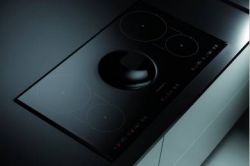Borutka wrote: They really were great, and they worked that way
How can the pot work? It is a passive "device". The stories about the candle are purely marketing fake.
That doesn't mean anything. It only serves to fool the client. You can heat the soup (!!!) with candles in every pot.
It is not known what temperature rise and how much soup ... but it doesn't matter. What matters is the effect of influencing emotions!
This is a typical manipulation similar to the provision of the thermal power of devices without specifying the operating conditions.
With the rest, such and similar methods were used by all hawkers selling vacuum cleaners or household chemicals for prices completely inadequate to the quality, based on people's ignorance and manipulation.
MARCIN.SLASK wrote: The enamel pot is about 1mm thick and when measuring the power it came out about 1450W. The better pot has a bottom 10-12mm thick made of ferromagnetic steel (not to be confused with fakes where thick aluminum and a thin plate insert or some alloy that the magnet catches poorly) and power consumption about 2000W.
Very interesting information. The question is what the power measurement was done and how true it is. Although there are two truths in this regard. The truth of the physical and real power or energy consumption and the truth of the energy company, that is what the electricity meter will show. It is better not to mention simple power meters with such a device.
So it can be concluded that "thickness matters"

Most stainless steel pots have a rather thick bottom. Unfortunately, what is rolled on this day is unknown.
Only a comparative experiment would tell which pot is better.
Knowing life, not always the more expensive will be better. Unfortunately.



